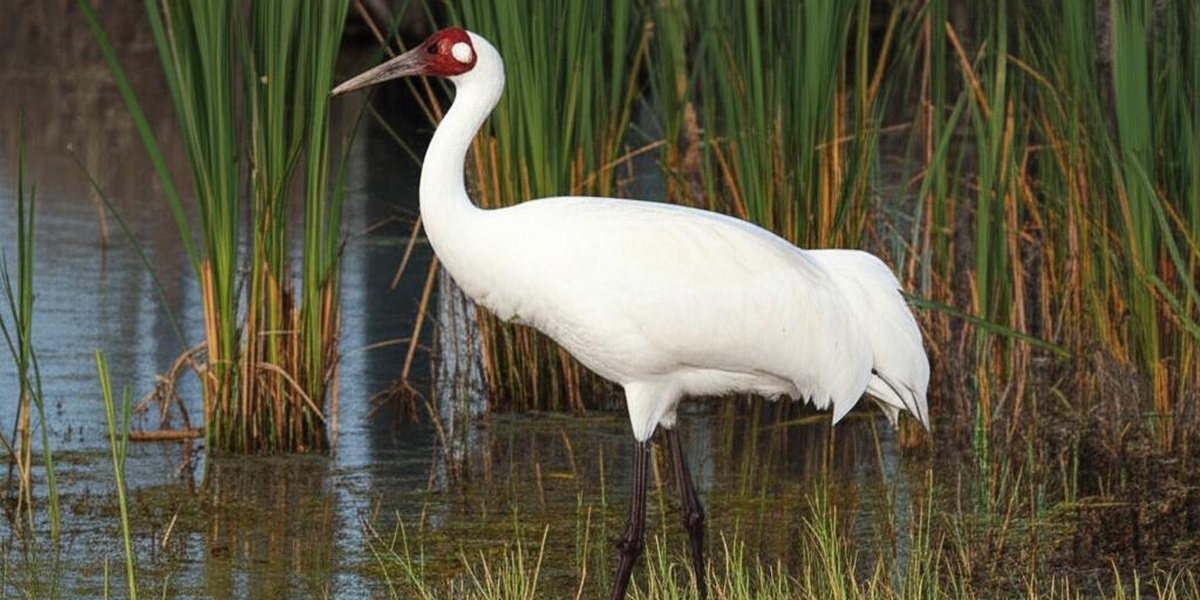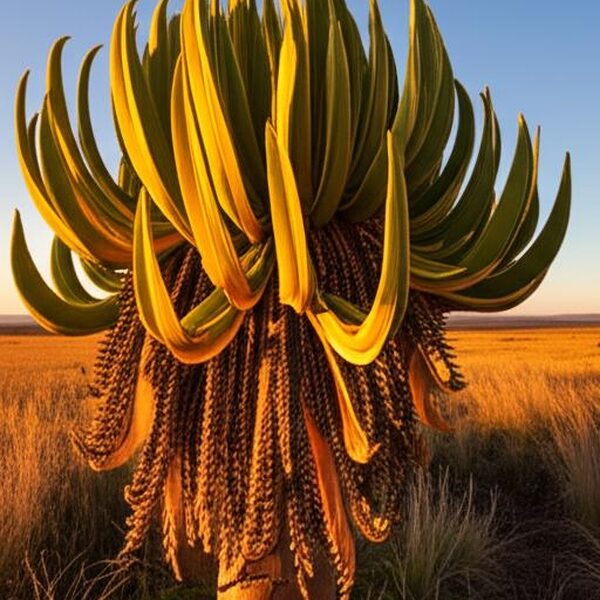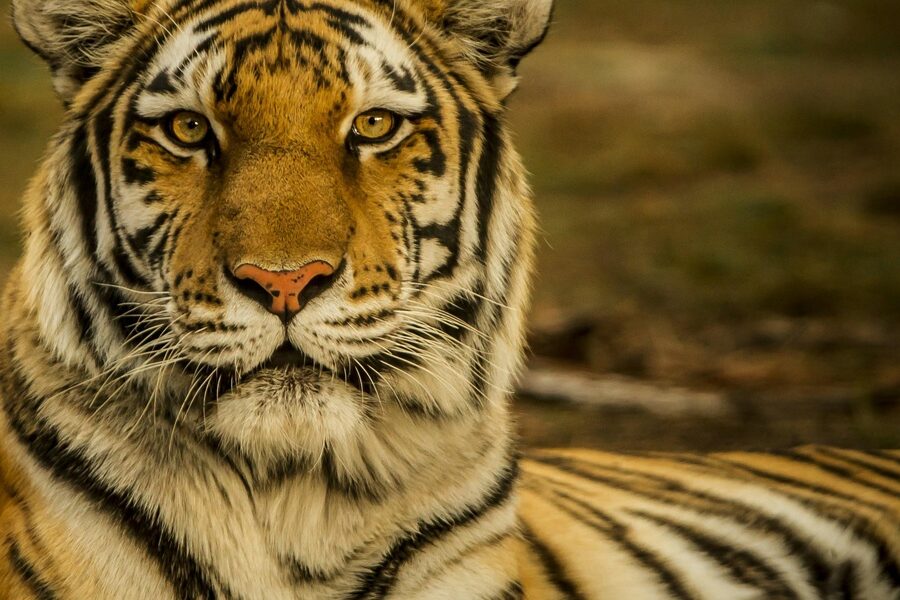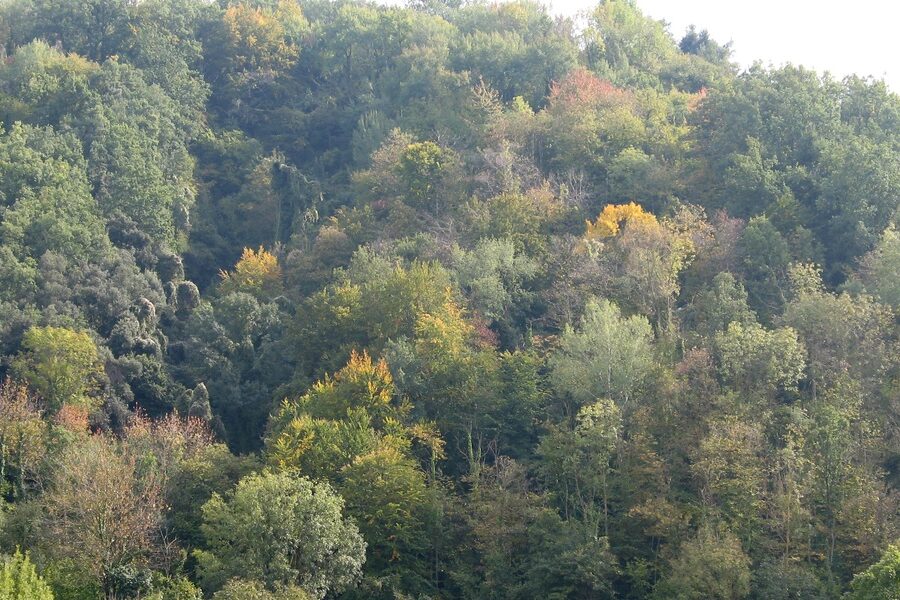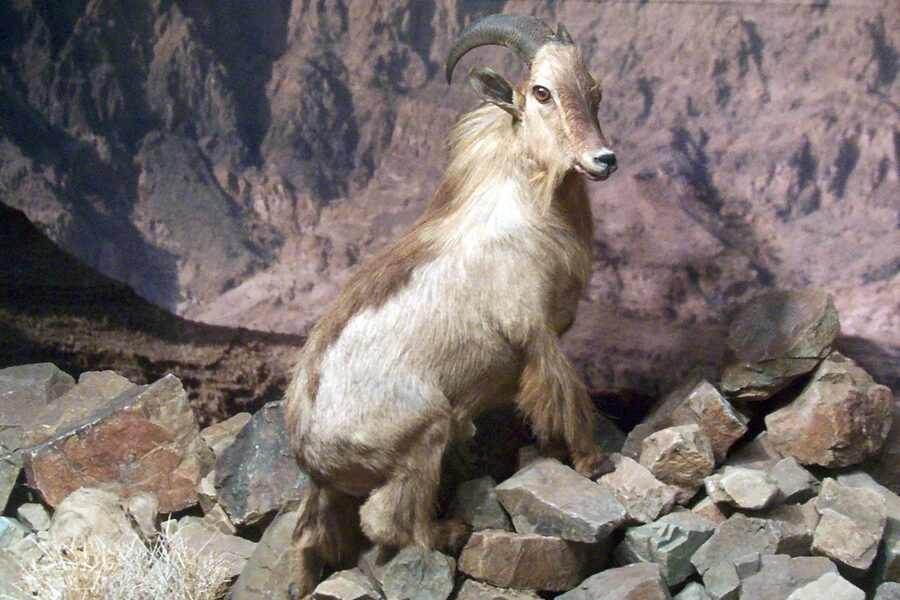New Orleans, a city famed for its vibrant culture and resilient spirit, also boasts an incredibly rich and diverse natural landscape. Its unique position, nestled between the Mississippi River and vast coastal wetlands, supports a myriad of plant and animal life, many of which are truly unique to the region and contribute significantly to its ecological identity.
This list details exactly 9 Endangered Species in New Orleans, showcasing the range from the impressive Alligator Snapping Turtle to the majestic West Indian Manatee. For each, you’ll find critical information such as its Scientific Name, Conservation Status, Typical Habitat, and Primary Threats, providing a comprehensive overview of their plight and what makes them vulnerable. Dive in below to learn more about these vital inhabitants.
Why are species in New Orleans becoming endangered?
The primary reasons for species endangerment in New Orleans are multifaceted, largely stemming from human activity and environmental shifts. Habitat destruction due to urban development, coastal erosion, and wetland degradation is a major factor, reducing crucial living spaces. Pollution, particularly from industrial runoff and agricultural practices, contaminates their environments and food sources. Furthermore, climate change exacerbates these issues, contributing to sea-level rise and more intense storms, which directly threaten the delicate balance of New Orleans’ unique ecosystems.
What can be done to help endangered species in New Orleans?
Protecting New Orleans’ endangered species requires a concerted effort from individuals and communities. Supporting local conservation organizations and participating in habitat restoration projects, such as wetland planting, are crucial steps. Advocating for sustainable land use policies and stricter pollution controls can also make a significant difference. Additionally, raising awareness about these species and the challenges they face within your community can inspire broader involvement and support for their long-term survival.
Endangered Species in New Orleans
| Species Name | Scientific Name | Conservation Status | Typical Habitat | Primary Threats |
|---|---|---|---|---|
| Alligator Snapping Turtle | Macrochelys temminckii | Federally Threatened, State Threatened | Slow-moving freshwater rivers, canals, lakes, and bayous, including those in City Park and surrounding wetlands. | Habitat degradation, water pollution, and historical over-harvesting for its meat. |
| Gulf Sturgeon | Acipenser oxyrinchus desotoi | Federally Threatened | Lives in the Gulf of Mexico but migrates up the Mississippi River and other large rivers to spawn. | Dams blocking migration, historical overfishing, and dredging that destroys river-bottom habitat. |
| Kemp’s Ridley Sea Turtle | Lepidochelys kempii | Federally Endangered | Shallow coastal and estuarine waters of the Gulf of Mexico, including areas like the Chandeleur Sound near New Orleans. | Bycatch in fishing gear (especially shrimp trawls), pollution, and loss of nesting beaches. |
| Pallid Sturgeon | Scaphirhynchus albus | Federally Endangered | The deep, murky, and fast-flowing channels of the Mississippi River. | River channelization, dams, and altered water flows that disrupt its habitat and life cycle. |
| West Indian Manatee | Trichechus manatus | Federally Threatened | Warm coastal waters, estuaries, and slow-moving rivers. Often seen in Lake Pontchartrain and associated canals during summer months. | Collisions with boats, habitat loss due to coastal development, and cold stress during winter. |
| Piping Plover | Charadrius melodus | Federally Threatened | Winters on coastal beaches, sandflats, and mudflats, including the shores of Lake Pontchartrain and nearby barrier islands. | Coastal development, human disturbance on beaches, and increased predation. |
| Green Sea Turtle | Chelonia mydas | Federally Threatened | Nearshore coastal waters, bays, and estuaries with seagrass beds, like those found in the wider New Orleans coastal area. | Boat strikes, entanglement in fishing gear, pollution, and degradation of feeding habitats. |
| Loggerhead Sea Turtle | Caretta caretta | Federally Threatened | Coastal bays, estuaries, and the continental shelf of the Gulf of Mexico, foraging in waters near the Louisiana coast. | Bycatch in commercial fishing gear, plastic pollution, and destruction of coastal nesting habitats. |
| Red Knot | Calidris canutus rufa | Federally Threatened | Uses coastal mudflats and sandy beaches as crucial stopover and wintering sites along the Louisiana coast near New Orleans. | Loss of food sources, coastal development, climate change, and sea-level rise. |
Images and Descriptions
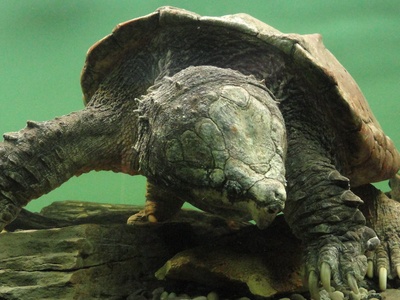
Alligator Snapping Turtle
A prehistoric-looking giant, this is North America’s largest freshwater turtle. It uses a unique worm-like lure on its tongue to attract fish, making it an iconic resident of Louisiana’s hidden waterways.
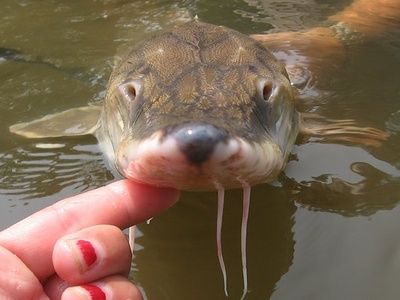
Gulf Sturgeon
An ancient ‘living fossil,’ this large, bony-plated fish can leap dramatically from the water. Its journey from the Gulf into the Mississippi River connects our city’s waters to a primeval past and underscores the need for healthy rivers.
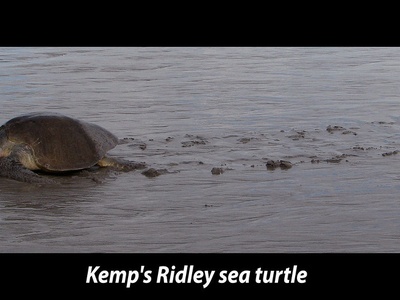
Kemp’s Ridley Sea Turtle
The world’s smallest and most critically endangered sea turtle, the Kemp’s Ridley is a crucial part of the Gulf ecosystem. These turtles feed on crabs in the coastal waters that are intrinsically linked to the health of the New Orleans estuary.
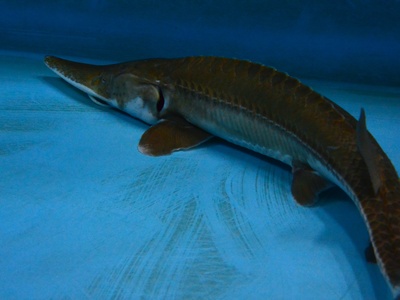
Pallid Sturgeon
A rare and mysterious resident of the mighty Mississippi, the Pallid Sturgeon is perfectly adapted to big river life. Its pale color and long snout help it find food on the riverbed, a true survivor from the age of dinosaurs.
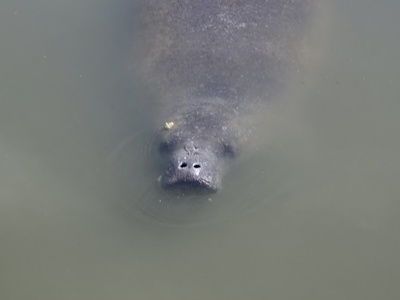
West Indian Manatee
These gentle, slow-moving marine mammals, also known as ‘sea cows,’ graze on aquatic vegetation. Their visits to New Orleans’ waterways highlight the connection between the city and the Gulf’s marine ecosystems.
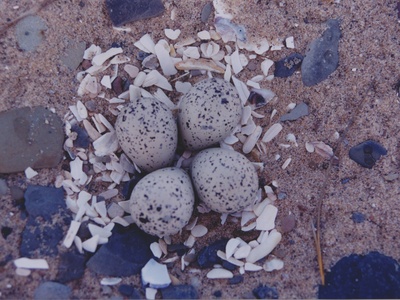
Piping Plover
This small, sand-colored shorebird is a beloved winter resident along our coast. Its reliance on undisturbed beaches makes it highly vulnerable to human activity, coastal erosion, and sea-level rise.
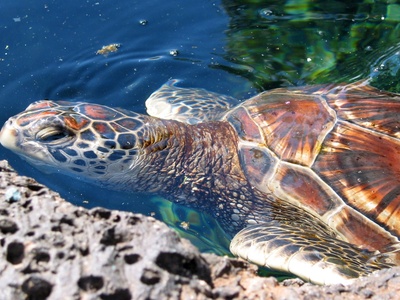
Green Sea Turtle
Named for the color of its body fat, not its shell, this large herbivorous turtle grazes on seagrass. It plays a vital role in maintaining coastal seagrass beds, which are important nurseries for many fish species.

Loggerhead Sea Turtle
Recognized by its massive head and powerful jaws used for crushing shells, the Loggerhead is a wide-ranging mariner of the Gulf. Its presence highlights the impact of coastal activities on the broader marine environment connected to New Orleans.
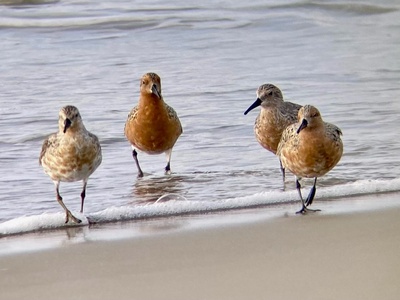
Red Knot
An incredible long-distance migrant, the Red Knot travels thousands of miles. Our coastal wetlands provide a vital ‘gas station’ for it to rest and refuel, connecting New Orleans to a global conservation story.
